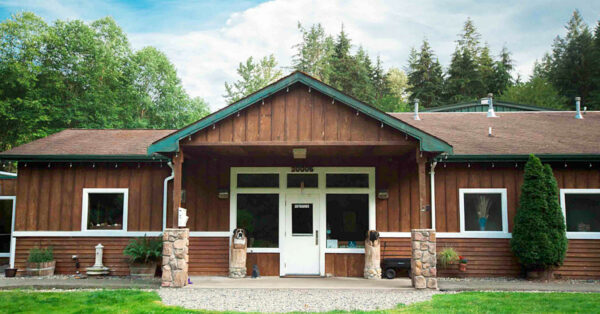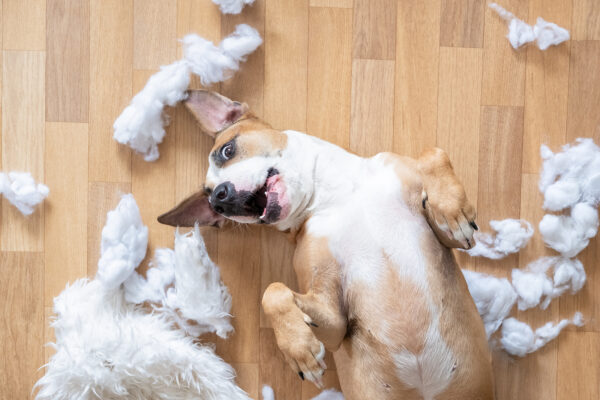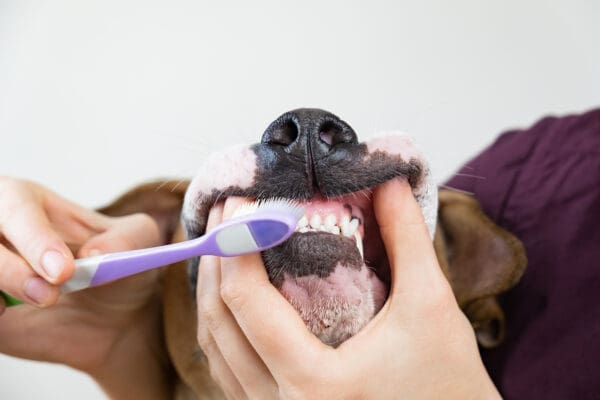
11401 NE 195th St. Bothell, WA 98011
(425) 486-9000 PHONE (425) 486-9002 fax
General Information
Testudo horsfieldii is known variously as the Russian, the Afghan, the Steppe, and the Horsfield’s tortoise. This tortoise is found primarily in Pakistan, Afghanistan, Iran, southeastern Russia, and China. Its native environment is harsh and arid, and includes sandy steppes, as well as grassy areas close to springs in arid, rocky, hilly terrain. It is found at elevations as high as 5,000 to 7,000 feet. This tortoise has the northernmost range of any known tortoise.
- horsfieldii is a great digger. It hibernates in deep burrows during the winter, and in the southern parts of its range it aestivates (experiences a dormant period) during the summer. In its native environment, this tortoise is active for only about three months of the year – typically March, April and May.
Description
Russian tortoises average five to eight inches long, with a rather flat, roundish, yellow-green or olive carapace (top of the shell). Males are usually smaller than the females, and are most easily sexed by the male’s tail, which is longer and thicker than the female’s (when withdrawn in its shell, the male’s tail will lie against its thigh). The plastron (underside of the shell) in both males and females is usually blotched with black, or may be black all over.
Husbandry
These are a hardy species, but do have some specific needs. Russian tortoises requires a very dry, well-drained cage in an indoor enclosure. The enclosure should have appropriate landscaping, with an area for both hiding and excercise, and an easily cleaned substrate.
Housing: Russian tortoises can be housed well indoors or outdoors in warm weather, depending on the climate. This species does not hibernate in winter, so if your tortoise lives outside, it must have a reliable heat source when the weather is cool. Outdoor enclosures must also be predator proofed, which can be difficult. The most commonly recommended form of indoor accommodation for small or medium sized tortoises is a “turtle table;” instructions for how to make these enclosures are available online. Hatchlings can start out in 10-20 gallon aquariums, while adults can be housed in 75 gallon aquariums or larger custom-built enclosures measuring 4’W x 4’L x 1-2’H (bigger is usually better). A water source (bowl or tub) that is large enough for the tortoise to soak in, yet shallow enough to allow easy entry/exit, should be provided. Appropriate substrates range from newspaper, paper towels, reptile carpet, timothy hay, and alfalfa pellets. Substrates to be avoided include sand, soil, bark, mulch, gravel, and wood chips; these either hold in too much humidity, or are known impaction risks. The cage should be spot cleaned weekly and receive a full substrate change/cleaning every other week.
Russian tortoises like to dig/burrow, and a “dig box” of top soil/sand mixture should be provided to allow this natural behavior and provide a higher humidity corner of the enclosure. The substrate should be kept moist, but not soaked (if squeezed, the soil should clump together but no water should come out).
Heating: Appropriate temperatures range between 80–85 degrees Fahrenheit during the day and 70-75 degrees Fahrenheit at night, with a basking spot during the day of approximately 95 degrees Fahrenheit. Appropriate heating elements are ceramic heat emitters, various heat bulbs (provided that any light-emitting heat bulbs are turned off at night), or under tank heaters attached to thermostats. It is important to purchase a temperature gun, or digital thermometers that possess probes, for accurate temperature readings. Plastic dial thermometers, or any thermometer with a fixed placement, are unreliable, and do not adequately gauge thermal gradients inside entire enclosures.
Lighting: UV lighting is necessary for the health of all tortoises, and it comes in two equally necessary forms. UVA rays are radiation waves that are needed to promote natural behaviors and stimulate appetite. UVB rays are the other type of radiation waves, necessary for the metabolism of calcium and bone health. A good way to tell the two UV rays apart is “A for appetite, B for bones.” UVB is only provided in 2 different kinds of lights: florescent lights specifically designed for UVB output in reptiles, and mercury vapor bulbs. Some bulbs sold in pet stores are labeled as being “full spectrum,” and packaging may erroneously lead you to believe that a bulb that produces UVA only is enough for a blue tongue, but unless the box specifically states that it offers UVB lighting, it will not be what your pet needs. All UVB bulbs will provide UVA, but not all UVA bulbs will provide UVB. Mercury vapor bulbs are among the longest lasting UVB sources on the market, and these bulbs also produce heat; they are highly recommended for Russian tortoises. Fluorescent bulbs for reptiles are another option for providing UV lighting; these come in a few different styles, the most common being the coil variety and the tubular strip variety. Coil fluorescents have the shortest lifespan of all UVB bulbs, and even though they may continue to produce visible light for years, the UVB they provide will only last about 3-4 months. Strip fluorescents are similar, but can last up to 4-6 months. If you purchase a fluorescent UV bulb instead of a mercury vapor bulb, make sure you purchase one with 10.0 output to meet your pet’s needs.
All bulbs should be replaced every 4-6 months, unless their output is being routinely measured with a UVB meter to ensure that they are producing adequate spectrum of lighting. It is important to allow the your tortoise to get within 12 inches of any UVB light source you do provide, as the distance of the light can greatly affect the amount of UVB absorbed. Regardless of what artificial light you provide, nothing beats the power of the sun. Supervised outdoor time during warm summer days will benefit your tortoise tremendously.
Humidity: Russian tortoises have relatively low humidity requirements, and thrive in 40-50% humidity. Regular misting of the cage is unnecessary.
Diet
The Russian tortoise’s natural diet is consists of herbaceous and succulent vegetation including grasses, twigs, flowers and some fruits. These tortoises DO NOT EAT ANIMAL PROTEIN! The best diet is one that comes as close as possible to their natural diet, which is high fiber, low protein, and calcium rich.
Ideally, the tortoise should graze on edible plants in its enclosure. However, you will find that they will eat many plants down to the roots and kill the plant. One way around this is to grow edible plants outside the enclosure, in a totally pesticide-free environment, and give these to the tortoise. Provide a varied assortment. Be careful not to overfeed T. horsfieldii, as they tend to be overweight in captivity. If they are starting to look chubby when they pull back into their shells, cut back on the amount you are feeding.
Grass hays, such as timothy, orchard grass, brome, etc., should always be available as a fiber source. Virtually any leafy greens available at a grocery store are acceptable food sources for Russian Tortoises, but they must be varied to provide appropriate nutrition. Collard greens, mustard greens, turnip greens, dandelion greens, watercress, escarole, swiss chard, parsley, kale, spinach, endive, spring mix, and romaine are all good choices. Spinach, kale, and swiss chard should be fed in limited amounts.
The following weeds, grasses, and flowers can be offered for added variety: Clovers, grasses (Common Bermuda, Timothy, Rye, Fescue, Bluegrass), Coreopsis, Hibiscus, Daisy, Strawberry, Honeysuckle, Dandelion, Apple, Mallows, Endive, Nasturtium, Blackberry, Radicchio, Opuntia, cacti, Gazania, Escarole, Petunias, Geranium, Roses, Chard, Sedums, Grape leaves (not grape ivy!), Parsley, Chicory, and Nettle.
Fruits are not eaten by wild Russia tortoises, and are not recommended as a food choice.
Supplementation
Calcium: Russian tortoises require additional calcium supplementation. Calcium powder is manufactured by many different brands on the market (Fluker’s, Exo-Terra, Rep-Cal, etc); whatever brand you choose, select a product that does not contain phosphorous or vitamin D3. It should be sprinkled onto the food once daily for tortoises less than 1 year old, and 2-3 times weekly for adults.
Multivitamin: Vitamins are also important to promote healthy body function. There are many brands that make multivitamins appropriate for reptiles (Herptivite, Reptivite, Vionate, etc). Vitamins (especially fat soluble vitamins such as A and D) are easy to overdose, and too much vitamin supplementation can actually be harmful. As a general rule, a reptile multivitamin supplement should be sprinkled on the food only once every one to two weeks.
Common Ailments
Respiratory Infection: This is a common and deadly illness that affects many captive tortoises. Russian tortoises are especially susceptible to respiratory ailments. Some of the signs to watch for are runny nose, labored breathing/gasping, loss of appetite, and decreased activity. Respiratory diseases in Russian tortoises can be caused by bacterial, fungal, viral, or parasitic infections. Vitamin deficiencies and inappropriately high/low humidity or temperature ranges are also a common cause of respiratory disease in all chelonians. These infections can be contagious to other turtles, and require immediate medical attention.
Parasites: Internal parasites in the gastrointestinal tract can be present in any tortoise, and can exacerbate an already ill animal’s problems. The best way to prevent this from being an issue is to have yearly fecal exams with your veterinarian while maintaining excellent husbandry at home. Tortoises can get these parasites from their food, their environment, and from each other. An excess of parasites should treated by a qualified reptile veterinarian to prevent a decline in health.
Metabolic Bone Disease: Also known as MBD, this is a term used to describe a number of disorders related to the weakening of bones or impaired system function caused by an imbalance of calcium, phosphorus, or vitamin D3. It is one of the most commonly seen health problems in reptiles, and is often the result of inadequate levels of calcium in the diet, or improper UVB lighting which is essential for calcium absorption. Symptoms of MBD range from the mild (lethargy, lack of appetite) to the severe (soft shell, abnormal shell growth, tremors and twitching of the extremities). Veterinary care is a must for any tortoise with suspected MBD.
March 30, 2015
Content of this Care Sheet Courtesy of:
The Center for Bird and Exotic Animal Medicine
11401 NE 195th St. Bothell, WA 98011
(425) 486-9000 PHONE (425) 486-9002 fax



